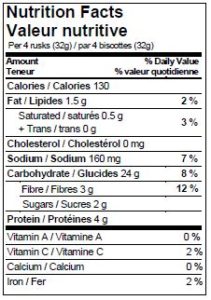“Fat Free” has been a popular phrase in the diet foods conversation since the early 1980’s but what that actually means and how fat free foods impact you nutritionally is a little obscure. The FDA allows any food with .5 grams of trans fat or less to claim “0 grams trans fat” on the label. Also, with small portion sizes it is possible for foods with a measurable fat content to get away with calling themselves fat free. “Reduced fat” means the food must contain at least 25 percent less fat than the regular product to which it is being compared, and at least 3g less fat per 100g of food. This means that a product can still be relatively high in fat, but still be labelled reduced fat.
Food labeling is a tricky business, the laws regarding labeling of foods and government science behind nutrition guidelines can be influenced by lobbyists, personal opinions and out of date research. Guidelines that are supposed to help us make good choices about what we eat often have a hidden agenda, as a result, many experts say some of the government’s diet advice continues to promulgate out-of-date research from years past. Recently, the Food and Drug Administration announced an indefinite delay in the launch of Nutrition Fact labels that were intended to help Americans eat more healthfully.
The labels, championed by former first lady Michelle Obama, were supposed to add a special line for “added sugars” and emphasize calorie content in large, bold text. They had been scheduled for rollout in July 2018, with a one-year extension for smaller manufacturers. Also, the FDA delayed rules that would have required calorie counts on restaurant menus and the Department of Agriculture loosened the minimum requirements for the amount of whole grain in school lunches with delayed future sodium reductions.
The bottom line is, reading nutritional labels is imortant. However, so is understanding not just what each line item means but also what is not listed on the label like trans fats or preservatives. The best way to eat a healthy balanced diet actually comes from foods without labels, fresh fruits, vegetables and meats.


